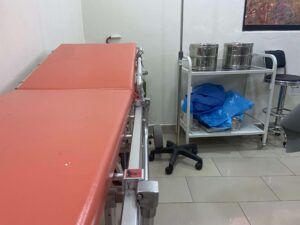Exploring the Depths of Sleep: A Comprehensive Guide to Drug-Induced Sleep Endoscopy (DISE).
Sleep disorders can significantly impact the quality of life, leading to various health issues and impairments. For individuals struggling with sleep-related breathing disorders, diagnostic tools like Drug-Induced Sleep Endoscopy (DISE) have emerged as valuable tools for accurate assessment and personalized treatment plans. In this blog post, we will delve into the intricacies of Drug-Induced Sleep Endoscopy, its procedure, applications, and its role in managing sleep-related breathing disorders.
Understanding Sleep-Related Breathing Disorders:
Before we explore Drug-Induced Sleep Endoscopy, it’s essential to grasp the nature of sleep-related breathing disorders. Conditions like obstructive sleep apnea (OSA) and snoring can have profound effects on an individual’s health, leading to daytime fatigue, impaired cognitive function, cardiovascular issues, and more. Identifying the anatomical and functional factors contributing to these disorders is crucial for effective treatment.
What is Drug-Induced Sleep Endoscopy (DISE)?
Drug-Induced Sleep Endoscopy is a diagnostic procedure designed to assess the upper airway dynamics during sleep. Unlike traditional awake endoscopy, DISE involves inducing sleep-like conditions in a controlled environment using sedative medications. This allows physicians to observe and evaluate the behavior of the upper airway structures, identifying specific sites of obstruction and collapse that contribute to sleep-related breathing disorders.
The Procedure:
- Patient Preparation: Before the procedure, patients undergo a thorough evaluation, including medical history, physical examination, and sleep studies. This helps determine the appropriate sedative dosage for the individual.
- Medication Administration: A sedative agent, commonly propofol, is administered to induce a state of sleep without affecting respiratory drive. The sedation is carefully titrated to achieve the desired level of unconsciousness for evaluation.
- Endoscopic Evaluation: A flexible endoscope is then introduced through the nose or mouth to visualize the upper airway structures. This is typically performed by an otolaryngologist or sleep medicine specialist.
- Dynamic Assessment: During sedation-induced sleep, the physician assesses the movement and function of various anatomical structures, including the soft palate, uvula, tongue, and pharyngeal walls. This dynamic evaluation provides insights into the specific sites and mechanisms of airway obstruction.
- Recording and Analysis: The procedure is often recorded for later analysis. The findings are then interpreted in the context of the patient’s overall clinical presentation and may guide the development of a targeted treatment plan.
Applications of DISE:
- Treatment Planning: DISE helps identify the specific anatomical factors contributing to sleep-related breathing disorders, allowing for more personalized and targeted treatment plans. This may include surgical interventions, such as uvulopalatopharyngoplasty (UPPP) or genioglossus advancement.
- CPAP Optimization: For individuals already using Continuous Positive Airway Pressure (CPAP) therapy, DISE can be valuable in optimizing the device settings based on the observed airway dynamics during sleep.
- Research and Advancements: DISE is also a valuable tool in ongoing research to understand the complexities of sleep-related breathing disorders. Insights gained from DISE studies contribute to the development of new treatment modalities and advancements in the field.
Benefits and Limitations:
Benefits:
- Precision in Diagnosis: DISE offers a detailed and dynamic assessment of the upper airway, providing a more precise diagnosis.
- Treatment Tailoring: The information gathered from DISE allows for the development of individualized treatment plans, improving treatment efficacy.
- Comprehensive Evaluation: DISE allows for the assessment of multiple levels of the upper airway, offering a comprehensive understanding of the patient’s anatomy and function during sleep.
Limitations:
- Sedation Risks: The use of sedative medications introduces potential risks, and the procedure must be performed in a controlled environment with proper monitoring.
- Resource Intensive: DISE requires specialized equipment, trained personnel, and a dedicated facility, making it less accessible in some settings.
- Interpretation Challenges: Interpreting DISE findings requires expertise, and there may be variations in interpretation among different practitioners.
Conclusion:
Drug-Induced Sleep Endoscopy has emerged as a valuable tool in the diagnosis and management of sleep-related breathing disorders. Its ability to provide a dynamic assessment of the upper airway during sleep-like conditions offers a unique perspective for physicians in tailoring effective treatment strategies. As technology and research continue to advance, DISE is likely to play an increasingly significant role in improving the lives of individuals struggling with sleep disorders, bringing us closer to more personalized and targeted interventions for better sleep health.



